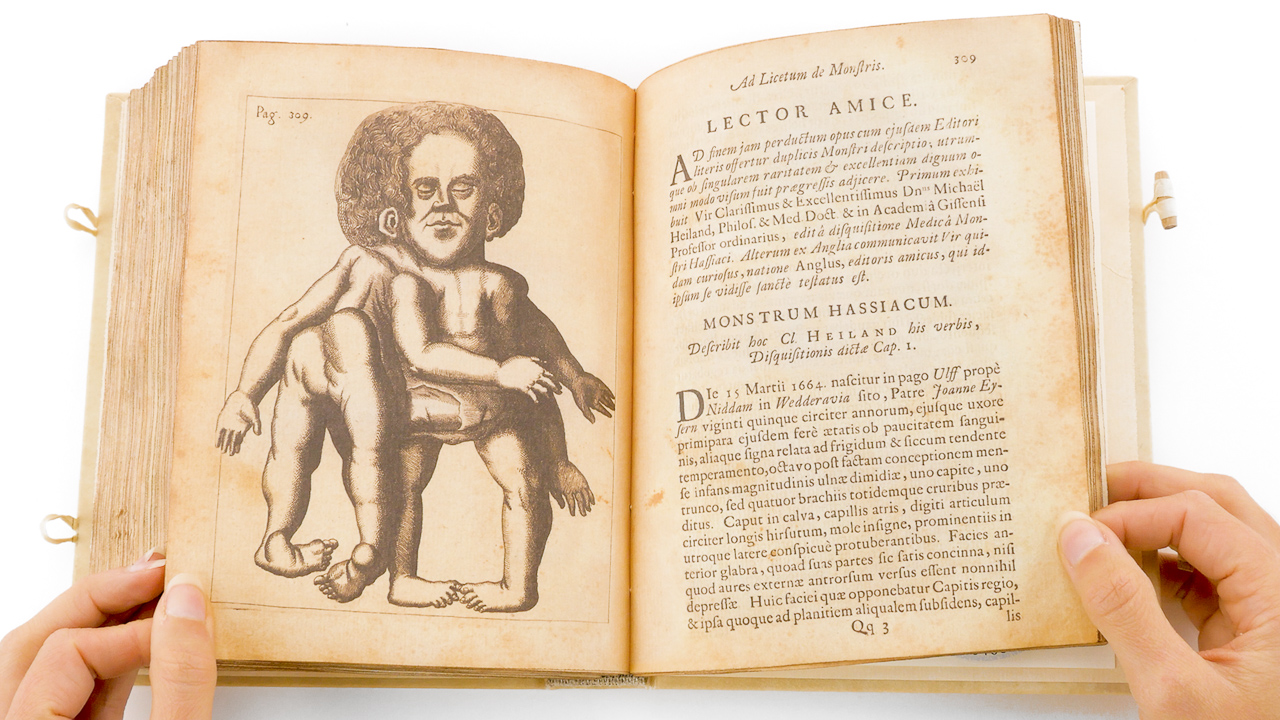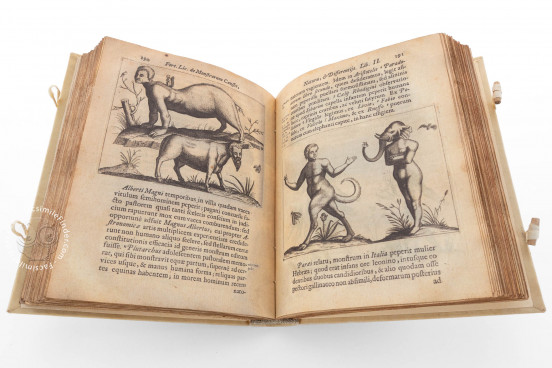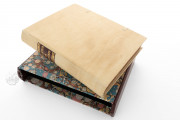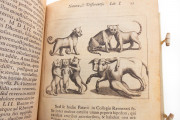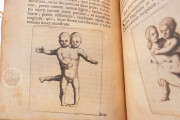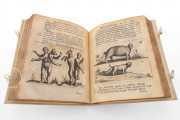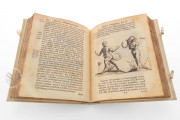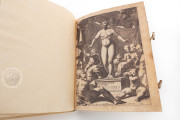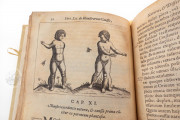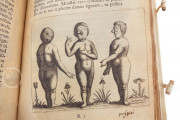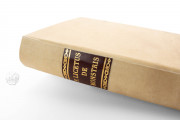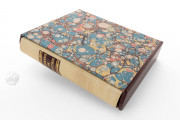De Monstris, a treatise by Fortunio Liceti on human and animal physical abnormalities, was published in 1668 by the heirs of Paulo Frambotti in Padua. It is a revised edition of the author's originally unillustrated De monstrorum causis, natura et differentiis, published in 1616. Its seventy-three engravings document the appearance of humans and animals with congenital disabilities and fabulous hybrids.
Liceti's text treats both physical anomalies recognized as congenital disabilities today and fantastical creatures, as well as animal species simply exotic to a European readership. He was a compiler who made few observations from nature. His work was one of the first to attempt a classification of physical abnormalities and to attribute causation to biological rather than supernatural factors.
Pictures Make for Readership
Liceti's first edition of 1616 did not make much of an impression, but the second edition of 1634—which included engravings depicting the abnormalities described—was widely read. The engravings in that edition, many of which copy images from earlier illustrated treatises on the subject, provided the models for the first series of illustrations in later editions.
Fascinating Beings
Many of the book's engravings depict rather appealing beings, such as the two-headed snake, three-headed lamb, and five-footed chicken that share a scene with other creatures (p. 22) or the human-headed lion that appears between a bird-headed man and a man with webbed feet and hands (p. 181).
Expanded Posthumous Editions
Two printings, including this one, under the new title De monstris, were posthumously published in close succession: in Amsterdam in 1665 and Padua in 1668. Edited by Gerardus Leonardus Blasius (d. 1692), the posthumous version includes an appendix on cases of "monsters" that became famous after Liceti's original publication, and fifteen of the engravings illustrate those new cases.
Engravings Used for Two Editions
A new half-title page and new engravings illustrating congenital disabilities, intersex beings, and fantastic hybrids described in the text were created for the Amsterdam edition. These were also used for the 1668 edition. Although the text flow varies, the engravings appear in nearly the exact locations in terms of page sequence and position on the page in the two editions. The first series, illustrating Liceti's original text, closely follows the first illustrated edition of 1643.
The half-title page shows a man—perhaps meant to represent Liceti—apparently lifting a curtain to reveal a woman with five breasts standing on a pedestal and surrounded by anomalous figures including a two-headed human and a man with a wolf head. The Dutch engraver Hendrik Bary (d. 1717) signed the half-title page, and he may have also been responsible for the anatomical engravings.
A Famous Contemporary Case
The conjoined twins Lazarus and Giovanni Battista Colleredo toured Europe in the 1630s and 1640s as celebrities; the fully formed Lazarus sometimes wore a long cloak to conceal his ill-formed brother protruding from his chest. The engraving in De Monstris, however, shows the pair in detail (p. 346).
Dedication to Patricians of Venice
The publisher Petrus Maria Frambotti dedicated De Monstris to Verità and Girolamo Zenobio of a fabulously wealthy Veronese family. They were counts of Königsberg, Salorno, Enn, and Kaldiff in South Tyrol and enjoyed (for a price) the title of patricians of the Republic of Venice.
We have 1 facsimile edition of the manuscript "De Monstris": De Monstris facsimile edition, published by Siloé, arte y bibliofilia, 2022
Request Info / Price
